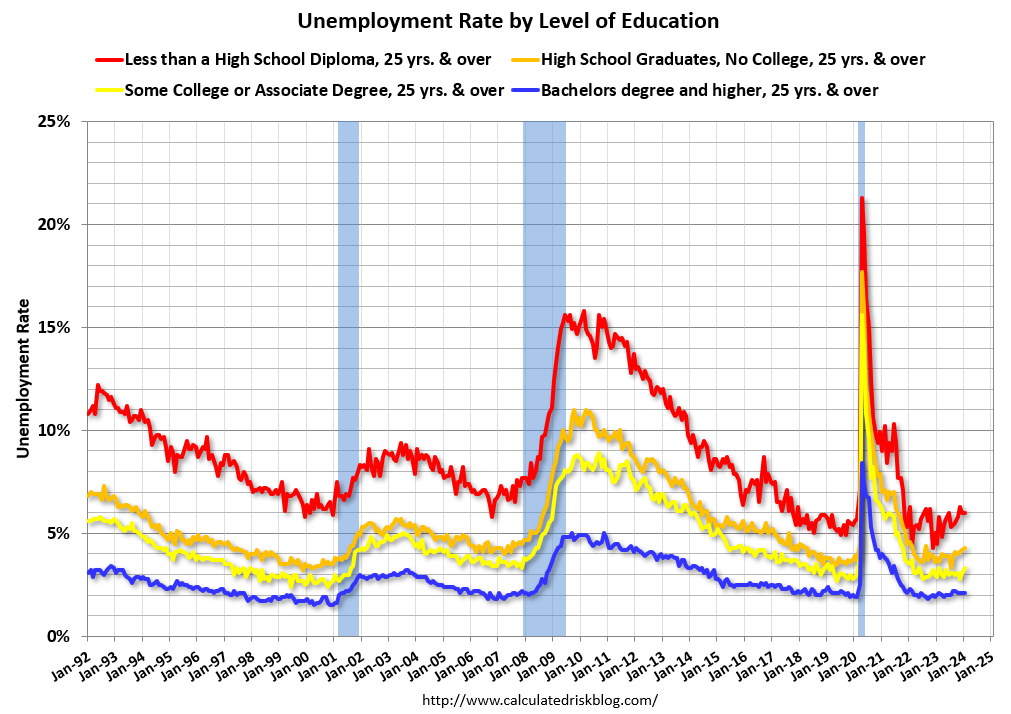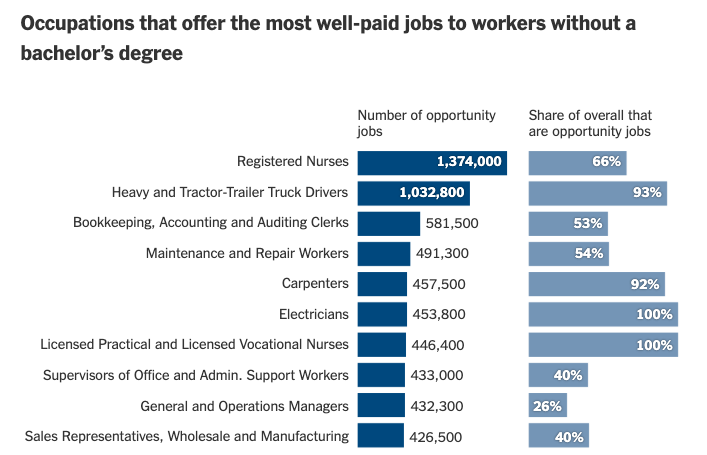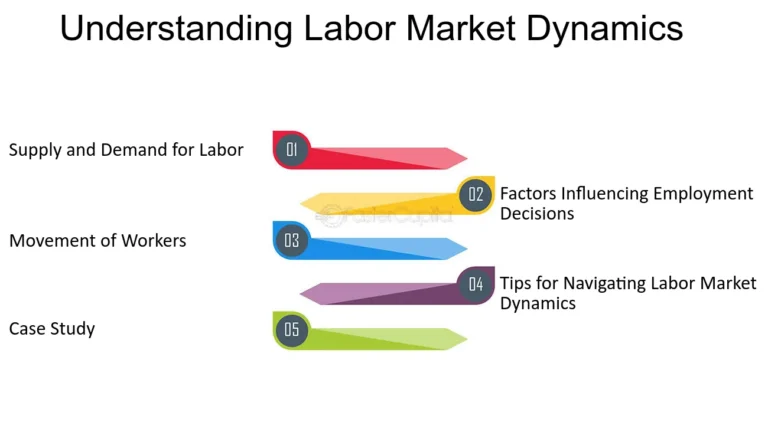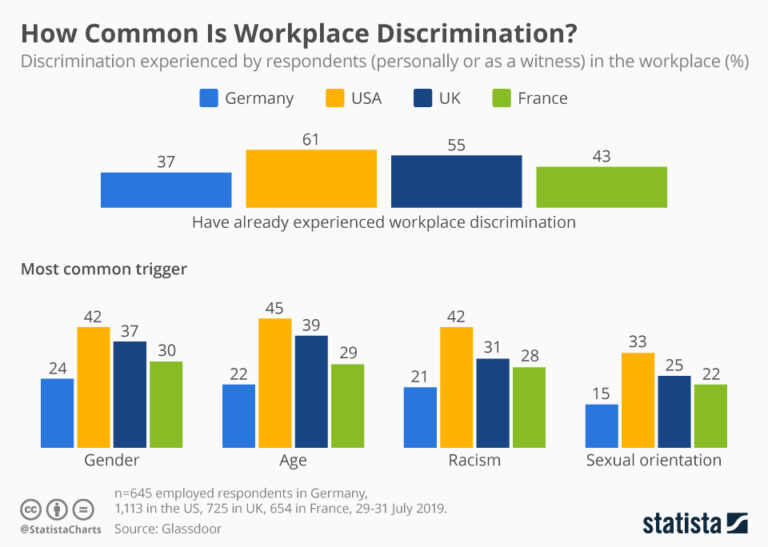თავი 3: ნავიგაციის შემოსავალი და კარიერა
გაკვეთილის სწავლის მიზნები:
შესავალი: This chapter explores how individuals align their work life with financial goals and personal values. Understanding job choices, the impact of education and training on career paths, and the dynamics of labor markets and entrepreneurship helps make informed career decisions.
- Choose Jobs and Careers: Learn to weigh both income and non-income factors such as job satisfaction, work-life balance, and independence when choosing a career. This helps balance financial rewards with personal fulfillment.
- Understand Diverse Income Sources: Explore different types of income like full-time employment, part-time work, self-employment, investment income, and passive income. This
diversification supports financial stability and personal satisfaction. - Evaluate Compensation and Benefits: Understand the various forms of compensation and
benefits beyond the basic salary, including health insurance and retirement plans. Evaluating
these components is crucial for making informed job choices.
შესავალი
შემოსავლისა და კარიერის გზაზე მოგზაურობა მრავალმხრივ კვლევას წარმოადგენს იმისა, თუ როგორ აკავშირებენ ინდივიდები თავიანთ სამუშაო ცხოვრებას ფინანსურ მიზნებთან და პირად ღირებულებებთან. ეს თავი დეტალურად განიხილავს სამუშაოს არჩევანთან დაკავშირებულ გადაწყვეტილებებს, განათლებისა და ტრენინგის გავლენას კარიერულ გზაზე და შრომის ბაზრებისა და მეწარმეობის დინამიურ ბუნებას.
Choosing Jobs and Careers
როდესაც ადამიანები პოტენციურ კარიერას ან სამუშაო შესაძლებლობებს განიხილავენ, ისინი აწონ-დაწონიან როგორც პოტენციურ შემოსავალს, ასევე არაშემოსავლიან ფაქტორებს. არაშემოსავლიანი ფაქტორები such as job satisfaction, work-life balance, independence, risk, and location often play a crucial role in this decision-making process. For example, some may prioritize careers that offer greater independence or job satisfaction over those with higher income potential. This balance between financial rewards and personal fulfillment highlights the complex interplay between our professional choices and life values.
- სამუშაოთი კმაყოფილება: სამსახურში მიზნისა და კმაყოფილების პოვნამ შეიძლება გადაწონოს უფრო მაღალი ხელფასის ცდუნება.
- დამოუკიდებლობა გულისხმობს ავტონომიას, რომელიც ადამიანს აქვს საკუთარ სამსახურში, როგორიცაა გადაწყვეტილებების მიღების, გრაფიკის დადგენისა და პროექტების არჩევის უნარი.
- რისკი მოიცავს სამსახურის დაკარგვის პოტენციალს, შემოსავლის ცვალებადობას და თვითდასაქმებასთან ან სამეწარმეო წამოწყებებთან დაკავშირებულ ფინანსურ გაურკვევლობას.
- მაგალითი: IT კონსულტანტი აფასებს დამოუკიდებლობას, ირჩევს პროექტებს, რომლებიც შეესაბამება პირად ინტერესებს, თუმცა თან ახლავს არასტაბილური შემოსავლის რისკი. პირიქით, საჯარო სკოლის მასწავლებელს შეიძლება ნაკლები დამოუკიდებლობა ჰქონდეს იმის არჩევაში, თუ რა ასწავლოს, მაგრამ უფრო მეტი სამუშაო უსაფრთხოება ჰქონდეს.
- მაგალითი: IT კონსულტანტი აფასებს დამოუკიდებლობას, ირჩევს პროექტებს, რომლებიც შეესაბამება პირად ინტერესებს, თუმცა თან ახლავს არასტაბილური შემოსავლის რისკი. პირიქით, საჯარო სკოლის მასწავლებელს შეიძლება ნაკლები დამოუკიდებლობა ჰქონდეს იმის არჩევაში, თუ რა ასწავლოს, მაგრამ უფრო მეტი სამუშაო უსაფრთხოება ჰქონდეს.
- ოჯახი და მდებარეობა: ოჯახური მოსაზრებები შეიძლება მოიცავდეს ისეთი სამსახურის არჩევას, რომელიც მოქნილ სამუშაო საათებს ან საყვარელ ადამიანებთან სიახლოვეს ითვალისწინებს. მდებარეობა ეხება დასაქმების გეოგრაფიულ არეალს, რომელიც გავლენას ახდენს ცხოვრების წესზე, ცხოვრების ფასსა და დასაქმების შესაძლებლობების ხელმისაწვდომობაზე.
- მაგალითი: ჯეინმა უარი თქვა სხვა შტატში მაღალანაზღაურებად სამსახურზე, რათა ოჯახთან ახლოს დარჩენილიყო და პრიორიტეტი შვილების სტაბილურობა მიანიჭა. ამასობაში, ალექსი გადავიდა ქალაქში, სადაც ცხოვრების ღირებულება მაღალი იყო, რათა ემუშავა ტექნოლოგიების სფეროში კარიერულ წინსვლაზე.
- მაგალითი: ჯეინმა უარი თქვა სხვა შტატში მაღალანაზღაურებად სამსახურზე, რათა ოჯახთან ახლოს დარჩენილიყო და პრიორიტეტი შვილების სტაბილურობა მიანიჭა. ამასობაში, ალექსი გადავიდა ქალაქში, სადაც ცხოვრების ღირებულება მაღალი იყო, რათა ემუშავა ტექნოლოგიების სფეროში კარიერულ წინსვლაზე.
- Diverse Income Sources: Today’s workforce is increasingly exploring varied ways to earn income, including full-time employment, part-time work, self-employment, investment income, and passive income streams. This diversification reflects a strategic approach to financial stability and personal satisfaction.
შემოსავლის ტიპები
- სრული განაკვეთით დასაქმებული: კომპანიაში ან ორგანიზაციაში მუდმივი დასაქმება, როგორც წესი, ფიქსირებული ხელფასითა და შეღავათებით.
- რისკები: სამუშაო უსაფრთხოებაზე შეიძლება გავლენა იქონიოს ეკონომიკურმა კრიზისმა ან კომპანიის რესტრუქტურიზაციამ.
- ჯილდოები: სტაბილური შემოსავალი, თანამშრომლების შეღავათები (ჯანმრთელობის დაზღვევა, საპენსიო გეგმები).
- მაგალითი: სარა სრული განაკვეთით მუშაობს პროგრამული უზრუნველყოფის ინჟინრად, სარგებლობს ჯანმრთელობის დაზღვევის შეღავათებით და სტაბილური ხელფასით, თუმცა სამსახურიდან გათავისუფლების რისკის წინაშე დგას.
- ნახევარ განაკვეთზე მომუშავე თანამშრომელი: სრულ განაკვეთთან შედარებით შემცირებული სამუშაო საათებით დასაქმება, ხშირად თანამშრომლის შეღავათების სრული სპექტრის გარეშე.
- რისკები: დაბალი შემოსავალი, შეზღუდული სამუშაო უსაფრთხოება და ხშირად შეღავათების არარსებობა.
- ჯილდოები: მოქნილობა, განათლების ან სხვა ინტერესების პარალელურად მიღწევის შესაძლებლობა.
- მაგალითი: მაიკი ნახევარ განაკვეთზე მუშაობს საცალო ვაჭრობაში, რაც მას კოლეჯში სწავლისთვის დროს აძლევს, თუმცა დამსაქმებლისგან ჯანმრთელობის დაზღვევა არ აქვს.
- თვითდასაქმება: საკუთარი თავისთვის მუშაობა და არა დამსაქმებლისთვის, მომსახურების შეთავაზება ან ბიზნესის წარმოება.
- რისკები: შემოსავლის ცვალებადობა, საკუთარი გადასახადებისა და შეღავათების გადახდაზე პასუხისმგებლობა.
- ჯილდოები: დამოუკიდებლობა, სამუშაო დატვირთვასა და კლიენტებზე კონტროლი, უფრო მაღალი შემოსავლის მიღების პოტენციალი.
- მაგალითი: ლინდა საკუთარ გრაფიკული დიზაინის ბიზნესს მართავს, სარგებლობს პროექტების არჩევის თავისუფლებით, მაგრამ უმკლავდება არარეგულარული შემოსავლის სტრესს.
- ინვესტიციის შემოსავალი: ინვესტიციებიდან მიღებული შემოსავალი, როგორიცაა აქციები, უძრავი ქონება ან სხვა აქტივები. ფულის გამოყოფა მომავალში რაიმე სარგებლის მოლოდინით.
- რისკები: კაპიტალის დაკარგვის პოტენციალი, ბაზრის არასტაბილურობა.
- ჯილდოები: პასიური შემოსავალი პროცენტის, დივიდენდების ან კაპიტალის მოგების სახით.
- მაგალითი: რაჯი ინვესტირებას ახდენს საფონდო ბირჟაზე, იღებს დივიდენდებს და განიცდის ბაზრის ცვლილებების აღმავლობასა და ვარდნას.
- პასიური შემოსავალირეგულარულად მიღებული შემოსავალი, რომლის შენარჩუნებაც მინიმალურ ან საერთოდ არანაირ ძალისხმევას არ მოითხოვს, მაგალითად, იჯარის შემოსავალი ან ჰონორარები.
- რისკები: დამოკიდებულია ბაზრის პირობებზე, შემოსავლის შეფერხების პოტენციალი.
- ჯილდო: სტაბილური შემოსავლის წყარო პირდაპირი შრომის გარეშე.
- მაგალითი: ემილი აქირავებს ქონებას და ყოველთვიურად იღებს ქირას ყოველდღიური მართვის პასუხისმგებლობების გარეშე.
Understanding Compensation and Benefits in the Workplace
ანაზღაურება არ ნიშნავს მხოლოდ თვის ბოლოს გაცემულ ხელფასს. ის მოიცავს ხელფასებს, საკომისიოებს, ჩაის ფულს, ბონუსებს და თანამშრომლების მრავალრიცხოვან შეღავათებს, როგორიცაა ჯანმრთელობის დაზღვევა, საპენსიო დანაზოგების გეგმები და განათლების ანაზღაურების პროგრამები. ანაზღაურების მრავალმხრივი ბუნების გაგება უმნიშვნელოვანესია როგორც თანამშრომლებისთვის, ასევე დამსაქმებლებისთვის, რომლებიც ცდილობენ თავიანთი კარიერული გზის ნავიგაციას, რათა მიიზიდონ საუკეთესო ნიჭი.
კომპენსაციისა და შეღავათების შესწავლა
- კომპენსაციის ფორმებიანაზღაურება სცილდება ძირითად ხელფასს და მოიცავს ცვლად კომპონენტებს, როგორიცაა გაყიდვების პოზიციებზე საკომისიოები, მომსახურების სფეროში არსებული ჩაის ფული და შესრულებასთან დაკავშირებული ბონუსები. ამ ცვლად კომპონენტებს შეუძლიათ მნიშვნელოვნად იმოქმედონ თანამშრომლის მთლიან შემოსავალსა და ფინანსურ სტაბილურობაზე.
- თანამშრომლების შეღავათებიკომპანიები ხშირად სთავაზობენ ყოვლისმომცველ შეღავათების პაკეტებს, რათა გაზარდონ თავიანთი მიმზიდველობა დამსაქმებლის რანგში. ეს შეიძლება მოიცავდეს ჯანმრთელობის დაზღვევას, საპენსიო დანაზოგების გეგმებს, როგორიცაა 401(k) და შეღავათებს, როგორიცაა განათლების ანაზღაურება. ეს შეღავათები არა მხოლოდ უზრუნველყოფს თანამშრომლების უსაფრთხოებას და მხარდაჭერას, არამედ აჩვენებს დამსაქმებლის ინვესტიციას მათი სამუშაო ძალის კეთილდღეობასა და მომავალში.
თანამშრომლების შეღავათების უფრო ღრმად შესწავლა
- პოტენციური შემოსავლისა და სარგებლის კვლევასამუშაოს მაძიებლებისა და თანამშრომლებისთვის სასიცოცხლოდ მნიშვნელოვანია, შეისწავლონ და გაიგონ დამსაქმებლების მიერ შემოთავაზებული პოტენციური შემოსავლისა და შეღავათების პაკეტი. ეს შეიძლება მოიცავდეს სხვადასხვა კომპანიის, სამთავრობო უწყების ან არაკომერციული ორგანიზაციების პაკეტების შედარებას, რათა იპოვონ მათ საჭიროებებსა და ღირებულებებზე საუკეთესოდ მორგებული.
- თანამშრომლების შეღავათების შეფასების მნიშვნელობასამუშაო შესაძლებლობების არჩევისას აუცილებელია ხელფასთან და ანაზღაურებასთან ერთად შეღავათების შეფასება. ისეთ შეღავათებს, როგორიცაა ჯანმრთელობის დაზღვევა, საპენსიო გეგმები და მოქნილი სამუშაო გრაფიკი, შეიძლება მნიშვნელოვანი გრძელვადიანი გავლენა ჰქონდეს ინდივიდის ფინანსურ ჯანმრთელობასა და სამუშაო და პირადი ცხოვრების ბალანსზე.
- შენატანებითი და არაშენატანებითი შეღავათებიშენატანებით (თანამშრომლები და დამსაქმებლები იზიარებენ შეღავათების ხარჯებს, როგორიცაა საპენსიო დანაზოგების გეგმები) და არაშენატანებით (დამსაქმებლები სრულად ფარავენ შეღავათების ხარჯებს, როგორიცაა ზოგიერთი ჯანმრთელობის დაზღვევის გეგმა) შორის განსხვავების გაგება. ეს განსხვავება გავლენას ახდენს კომპენსაციის პაკეტის საერთო ღირებულებაზე და შეიძლება გავლენა მოახდინოს სამუშაოს არჩევის გადაწყვეტილებებზე.
- დამსაქმებლის მიერ დაფინანსებული გეგმების ღირებულებადამსაქმებლის მიერ დაფინანსებულ საპენსიო და ჯანდაცვის გეგმებში მონაწილეობა ძალიან სასარგებლოა. ეს გეგმები ხშირად მოიცავს დამსაქმებლის შენატანებს, რამაც შეიძლება მნიშვნელოვნად გაზარდოს თანამშრომლის დანაზოგი და ფინანსური უსაფრთხოება. ამ სარგებლის გააზრება და მათი მაქსიმალურად გამოყენების გზები ფინანსური დაგეგმვისა და კარიერული განვითარების ძირითადი ასპექტია.
Education and Training Decisions
ადამიანების მზაობაზე, განაგრძონ განათლება ან გადამზადდნენ, გავლენას ახდენს მათ მიერ მიმდინარე ხარჯების შეფასება მომავალ სარგებელთან შედარებით. ეს გაანგარიშება მნიშვნელოვნად განსხვავდება ინდივიდებს შორის, მათი ცხოვრებისეული გარემოებებისა და მომავლის პერსპექტივიდან გამომდინარე. ზოგიერთმა შეიძლება კოლეჯის ღირებულება მომავალი შემოსავლის პოტენციალში ინვესტიციად მიიჩნიოს, ზოგი კი შეიძლება პროფესიულ მომზადებას ირჩევდეს სამუშაო ძალაში უფრო სწრაფად შესასვლელად. გადაწყვეტილება ხშირად დამოკიდებულია პირად მიზნებზე, ფინანსურ მდგომარეობაზე და დამატებითი განათლების აღქმულ ღირებულებაზე ცვალებად შრომის ბაზარზე.
განათლებისა და ტრენინგის ბარიერებიპოტენციური სარგებლის მიუხედავად, ბევრი მათგანი აწყდება დაბრკოლებებს შემდგომი განათლების მიღებისას, მათ შორის ფინანსურ შეზღუდვებს, ინფორმაციის ნაკლებობას ან პირად პასუხისმგებლობებს. ამ დაბრკოლებების დაძლევას სჭირდება ფრთხილად დაგეგმვა, მხარდაჭერა და ზოგჯერ, კრეატიული გადაწყვეტილებები, როგორიცაა ონლაინ სწავლება ან ნახევარ განაკვეთზე პროგრამები.
საგანმანათლებლო გზების შედარება
კოლეჯის განათლებასა და ტექნიკურ მომზადებას შორის ინვესტიციიდან მიღებული ანაზღაურების შეფასება გულისხმობს თითოეული მიმართულების ხარჯების, პოტენციური შემოსავლისა და დასაქმების შესაძლებლობების გათვალისწინებას. მიუხედავად იმისა, რომ კოლეჯის ხარისხი ხშირად მთელი ცხოვრების მანძილზე მაღალ შემოსავალს იწვევს, ტექნიკურ სასწავლებლებს შეუძლიათ სამუშაო ძალაში უფრო სწრაფად შესვლა და ნაკლები ვალის დაგროვება შესთავაზონ.
- უმუშევრობის მაჩვენებლებიზოგადად, უმაღლესი განათლების დონე კორელაციაშია უმუშევრობის დაბალ მაჩვენებლებთან, რაც ხაზს უსვამს განათლებაში ინვესტირების ღირებულებას. Iუმაღლესი განათლების მქონე პირებს, როგორც წესი, უფრო დაბალი უმუშევრობის დონე აქვთ, ვიდრე საშუალო სკოლის დიპლომის ან უფრო დაბალი დონის მქონე პირებს. ეს ნაწილობრივ განპირობებულია კვალიფიციურ მუშახელზე გაზრდილი მოთხოვნით და იმ მოქნილობით, რომელსაც უმაღლესი განათლება დინამიურ შრომის ბაზარზე იძლევა.

Figure title: Unemployment Rates by Education Level in January 2024
წყარო: Calculated Risk Blog
აღწერა: The figure likely illustrates the unemployment rates segmented by different levels of educational attainment as of January 2024. Although the specific details are not accessible, such graphs typically show unemployment rates decreasing with higher levels of education, demonstrating the protective effect of education against unemployment.
ძირითადი დასკვნები:
- უმაღლესი განათლების დონე, როგორც წესი, კორელაციაშია უმუშევრობის დაბალ მაჩვენებლებთან.
- მონაცემებმა შესაძლოა გამოავლინოს უმუშევრობის მნიშვნელოვანი უთანასწორობა განათლების დონის მიხედვით.
- დროთა განმავლობაში ტენდენციებმა შეიძლება მიუთითოს შრომის ბაზრის მიერ განათლების შეფასების ცვლილებებზე.
აპლიკაცია: Understanding the relationship between education and unemployment rates is crucial for policymakers, educators, and individuals making career and education decisions. For investors and analysts, this data can inform sectors likely to experience growth or contraction based on workforce education levels. It underscores the importance of investing in education to mitigate unemployment risks and suggests areas for targeted job creation and workforce development initiatives.
მაგალითი: During an economic downturn, Alex, with a bachelor’s degree in engineering, finds it easier to secure employment than Jamie, who only completed high school, highlighting the protective effect of higher education against unemployment.
პროფესიული მომზადება vs. კოლეჯის განათლება
პროფესიული მომზადების შეფასებისას საშუალო სკოლის მოსწავლეებმა შესაძლოა დააფასონ სამუშაო ძალაში უფრო სწრაფი შესვლა, განათლების დაბალი ხარჯები და კონკრეტული პროფესიებისთვის უნარების პირდაპირი შეძენა. თუმცა, მათ ასევე შეიძლება გაითვალისწინონ კარიერული წინსვლისა და ხელფასის ზრდის პოტენციური შეზღუდვები კოლეჯის ხარისხის მქონე სტუდენტებთან შედარებით.
კოლეჯის განათლება:
- უპირატესობებიუფრო ფართო საგანმანათლებლო საფუძველი, კარიერული მოქნილობის უფრო მაღალი პოტენციალი, როგორც წესი, უფრო მაღალი სიცოცხლის განმავლობაში შემოსავალი.
- ხარჯები: tსწავლის საფასური, სტუდენტური ვალის მნიშვნელოვანი პოტენციალი, სამუშაო ძალაში შესვლამდე უფრო ხანგრძლივი დროის ვალდებულება.
- ინვესტიციის ანაზღაურება (ROI): შეიძლება მაღალი იყოს, განსაკუთრებით მოთხოვნადი ხარისხებისთვის, მაგრამ მნიშვნელოვნად განსხვავდება სწავლის სფეროსა და ბაზრის პირობების მიხედვით.
მაგალითი: Jordan evaluates a four-year college degree in computer science against a two-year technical program in web development. While the college route offers broader career options and potentially higher earnings, the technical program allows quicker entry into a growing job market with less debt.
პროფესიული მომზადება:
- უპირატესობებიუფრო მოკლე ხანგრძლივობა, კონკრეტული პროფესიებისთვის ფოკუსირებული უნარების განვითარება, შრომის ბაზარზე უფრო სწრაფი შესვლა.
- ხარჯები: სწავლის საფასური (როგორც წესი, ოთხწლიან კოლეჯებთან შედარებით დაბალია), კარიერული მოქნილობის შეზღუდული რისკი.
- ინვესტიციის ანაზღაურება: ხშირად ხელსაყრელია დაბალი ხარჯებისა და შემოსავლის უფრო ადრე დაწყების შესაძლებლობის გამო, მაგრამ დამოკიდებულია კონკრეტული უნარების მოთხოვნაზე.
მაგალითი: Emma opts for a vocational program in dental hygiene, attracted by the short training period and good starting salaries, though mindful of the ceiling on advancement opportunities without further education.
კოლეჯის მიღმა კარიერული გზები
სხვადასხვა კარიერული გზა არ საჭიროებს ტრადიციულ კოლეჯის ხარისხს, მათ შორის კვალიფიციურ პროფესიებს, ტექნოლოგიურ სერტიფიკატებს, მეწარმეობასა და შემოქმედებით პროფესიებს. ამ გზებს შეუძლიათ შემოგთავაზონ მომგებიანი კარიერა ოთხწლიანი ხარისხის ფინანსური და დროის ინვესტიციის გარეშე.
მაგალითები:
- სერტიფიცირებულ ელექტრიკოსს ან სანტექნიკოსს პროფესიული მომზადების გზით შეუძლია მნიშვნელოვანი შემოსავლის მიღება.
- IT სერტიფიკატებს შეუძლიათ კარიერის გაღება კიბერუსაფრთხოების, ქსელის ადმინისტრირებისა და პროგრამული უზრუნველყოფის შემუშავების სფეროში.
- ნიშურ ბაზარზე ბიზნესის დაწყებამ შეიძლება ფინანსური წარმატება და პიროვნული კმაყოფილება გამოიწვიოს.

აღწერა: The figure likely showcases a list of jobs that are abundant and offer good pay without necessitating a bachelor’s degree. These positions might span various industries, highlighting the value of vocational training, certifications, and associate degrees. The graph or chart probably illustrates job counts, median salaries, or growth projections, emphasizing the opportunities outside traditional four-year college paths.
ძირითადი დასკვნები:
- პროფესიული მომზადება და სერტიფიკატები შეიძლება მომგებიანი კარიერისკენ მიგიყვანოთ.
- გარკვეულ სექტორებში, რომლებიც ბაკალავრის ხარისხს არ საჭიროებენ, კვალიფიციურ მუშახელზე მაღალი მოთხოვნაა.
- მრავალფეროვანი შესაძლებლობები არსებობს სხვადასხვა ინდუსტრიაში მათთვის, ვისაც ოთხწლიანი კოლეჯის ხარისხი არ აქვს.
- კონკრეტულ უნარებში ან პროფესიებში ინვესტირებამ შეიძლება მნიშვნელოვანი შემოსავალი მოიტანოს დასაქმებისა და ხელფასის თვალსაზრისით.
აპლიკაცია: This information is invaluable for individuals considering their career paths, educators guiding students, and policymakers focusing on workforce development. It highlights the importance of alternative education paths and the need for skills-based training. For investors and businesses, understanding these trends can inform decisions related to workforce development, education technology, and industry investments.
Informed Decisions on Education, Job, and Career
განათლებისა და კარიერული გზების შესახებ ინფორმირებული გადაწყვეტილებების მიღება გულისხმობს სხვადასხვა ვარიანტის სარგებლისა და ხარჯების შეფასებას. ეს შეფასება მოიცავს კოლეჯის განათლებაში ტექნიკური მომზადების ინვესტიციის ანაზღაურების გათვალისწინებას, განათლების სხვადასხვა დონესთან დაკავშირებულ უმუშევრობის მაჩვენებლებს და იმ კარიერული გზების შესწავლას, რომლებიც არ საჭიროებს კოლეჯის ხარისხს. ასეთი ანალიზი ეხმარება ინდივიდებს, კარიერული არჩევანი თავიანთ ფინანსურ მიზნებსა და პირად ღირებულებებთან შეათავსონ.
შრომის ბაზრის დინამიკა
ხელფასებსა და ანაზღაურებას, ძირითადად, შრომის ბაზარი განსაზღვრავს, რაც ასახავს კონკრეტული უნარებისა და პროფესიების მოთხოვნასა და მიწოდებას. ამ დინამიკაზე მოქმედი ფაქტორებია მუშაკთა პროდუქტიულობა, განათლება, უნარები და ეკონომიკური პირობები. ტექნოლოგიების განვითარებასთან და ეკონომიკური პირობების ცვლილებასთან ერთად, პირები იძულებულნი არიან ადაპტირდნენ დასაქმების შესაძლებლობებისა და შემოსავლის დონის ცვლილებებთან.
მაგალითი: ჯანდაცვის ინდუსტრიაში სპეციალიზებული ქირურგი გაცილებით მეტს გამოიმუშავებს, ვიდრე ზოგადი პრაქტიკის ექიმი, უმაღლესი განათლების მოთხოვნების, სპეციფიკური უნარებისა და მათი სპეციალობისადმი მოთხოვნის გამო.
- ეკონომიკური პირობებიისეთმა ფაქტორებმა, როგორიცაა რეცესია ან ტექნოლოგიური განვითარება, შეიძლება გამოიწვიოს დასაქმების მაჩვენებლებისა და ხელფასების ცვლილებები. მაგალითად, მობილური აპლიკაციების მოთხოვნის ზრდამ შეიძლება გაზარდოს პროგრამული უზრუნველყოფის შემქმნელების ხელფასები.
- Recession Example: During the 2008 financial crisis, many industries saw layoffs, but sectors like mobile app development experienced growth, leading to increased demand and higher wages for software developers.

Figure title: Examining Labor Market Dynamics and Their Influence on Industry Trends
წყარო: FasterCapital
აღწერა: The figure likely illustrates the complex interplay between labor market dynamics and industry trends, possibly through graphs, charts, or conceptual diagrams. It may highlight how factors such as technological advancements, demographic shifts, and economic policies affect employment rates, job creation, and the demand for specific skills across various industries.
ძირითადი დასკვნები:
- ტექნოლოგიური მიღწევები მნიშვნელოვნად მოქმედებს სამუშაო ძალაზე მოთხოვნაზე, ქმნის ახალ შესაძლებლობებს და ზოგიერთ სამუშაო ადგილს მოძველებულს ხდის.
- დემოგრაფიული ცვლილებები, მათ შორის მოსახლეობის დაბერება და მიგრაციის ნიმუშები, გავლენას ახდენს შრომის მიწოდებასა და მოთხოვნადი სამუშაო ადგილების ტიპებზე.
- ეკონომიკურ პოლიტიკას და გლობალურ მოვლენებს შეუძლიათ სწრაფად შეცვალონ შრომის ბაზრის დინამიკა, რაც გავლენას მოახდენს ინდუსტრიის ტენდენციებსა და სამუშაო ძალის დაგეგმვაზე.
- მთელი ცხოვრების მანძილზე სწავლისა და უნარების განვითარების მნიშვნელობა შრომის ბაზრის ცვალებად მოთხოვნებთან ადაპტაციისთვის.
აპლიკაცია: This analysis is crucial for policymakers, educators, businesses, and workers to understand and adapt to the evolving labor market. It underscores the need for flexible education systems, responsive workforce development programs, and strategic business planning to navigate the challenges and opportunities presented by labor market dynamics. For individuals, it highlights the importance of continuous learning and adaptability in securing employment and advancing in their careers.
Understanding Wages, Salaries, and the Impact of Productivity and Skills
ანაზღაურება მოიცავს ხელფასს, საკომისიოებს და შეიძლება მოიცავდეს ისეთ შეღავათებს, როგორიცაა ჯანმრთელობის დაზღვევა და საპენსიო დანაზოგების გეგმები. ამ ყოვლისმომცველი პაკეტების შეფასება სასიცოცხლოდ მნიშვნელოვანია სამუშაო შესაძლებლობებს შორის არჩევისას.
ბიზნესები მაღალ შეფასებას აძლევენ მუშაკთა პროდუქტიულობას და ხშირად უფრო მაღალ ხელფასს სთავაზობენ უფრო პროდუქტიულ თანამშრომლებს. პროდუქტიულობაზე შეიძლება გავლენა იქონიოს უნარებმა, გამოცდილებამ და სამუშაო ეთიკამ, რაც გავლენას ახდენს შემოსავლის პოტენციალზე იმავე სამუშაო როლებში.
მაგალითი: In a manufacturing firm, employees who consistently exceed production targets may receive higher wages or bonuses compared to their peers, reflecting the business’s incentive to reward productivity.
სამუშაო და კარიერის ტიპები, რომლებზეც გავლენას ახდენს მუშაკის პროდუქტიულობა და უნარები
დასაქმების სფეროში, გარკვეული კარიერა ნათლად ასახავს, თუ როგორ არის ხელფასები მჭიდრო კავშირში ინდივიდის პროდუქტიულობასთან და უნარებთან. მაგალითად:
- ტექნოლოგია და პროგრამული უზრუნველყოფის შემუშავებაამ სწრაფად განვითარებად სექტორში მაღალკვალიფიციური დეველოპერები, პროგრამისტები და ინჟინრები იღებენ მაღალანაზღაურებად ხელფასებს, რაც ასახავს მათ ინოვაციებისა და ტექნოლოგიური პროგრესის ხელშეწყობის უნარს.
- ჯანდაცვის სპეციალისტებიქირურგები, ექიმები და სპეციალიზებული სამედიცინო პრაქტიკოსები იღებენ ანაზღაურებას, რომელიც ასახავს მათ ფართო მომზადებას, უნარების დონეს და მათი სამუშაოს კრიტიკულ ბუნებას.
- გაყიდვების სპეციალისტებიგაყიდვების სფეროში ბევრ პოზიციაზე, განსაკუთრებით საკომისიოზე დაფუძნებული სტრუქტურის მქონე პოზიციებზე, შემოსავალი პირდაპირ კავშირშია პროდუქტიულობასთან გაყიდვების მოცულობისა და გენერირებული შემოსავლის თვალსაზრისით.
- იურიდიული პროფესიონალებისპეციალიზებული ექსპერტიზის ან სასამართლო დავებში წარმატების მაღალი მაჩვენებლის მქონე იურისტებსა და იურიდიულ კონსულტანტებს ხშირად უფრო მაღალი შემოსავლის პოტენციალი აქვთ, რაც მათი უნარებისა და გამოცდილების ღირებულებას უსვამს ხაზს.
- შემოქმედებითი ინდუსტრიებიმხატვრებმა, მწერლებმა და დიზაინერებმა შეიძლება დაინახონ შემოსავლის ცვალებადობა მათი უნიკალური ნიჭის მოთხოვნისა და ბაზარზე მათი ნამუშევრის წარმატების მიხედვით.
ხელფასებისა და ანაზღაურების ცვალებადობა
ხელფასები და ანაზღაურება მნიშვნელოვნად განსხვავდება სხვადასხვა სამუშაო ადგილზე და ერთი და იგივე პოზიციის მქონე მუშაკებს შორისაც კი, რამდენიმე ფაქტორის გამო:
- უნარების დონე და განათლებაგანათლების უფრო მაღალი დონე და სპეციალიზებული უნარები, როგორც წესი, უკეთ ანაზღაურებად შესაძლებლობებს იძლევა, რადგან ისინი გულისხმობენ მუშაკის უნარს, შეასრულოს რთული დავალებები.
- გამოცდილებაგამოცდილი პროფესიონალები ხშირად უფრო მაღალ ანაზღაურებას იღებენ, რადგან მათ თავიანთ პოზიციებზე დადასტურებული გამოცდილება და პოტენციურად უფრო მაღალი ხარისხის ეფექტურობა და ექსპერტიზა აქვთ.
- ინდუსტრია და ბაზრის მოთხოვნაკვალიფიციურ მუშაკებზე მაღალი მოთხოვნის მქონე სექტორები, როგორიცაა ტექნოლოგიები და ჯანდაცვა, ნიჭიერი კადრების მოსაზიდად და შესანარჩუნებლად, როგორც წესი, უფრო მაღალ ხელფასებს გვთავაზობენ.
- გეოგრაფიული მდებარეობარეგიონებს შორის ცხოვრების ღირებულებისა და ეკონომიკური პირობების განსხვავებებმა შეიძლება მნიშვნელოვნად იმოქმედოს ხელფასების დონეზე.
Persistence of Race and Gender Pay Gaps
თანასწორობისკენ მიღწეული პროგრესის მიუხედავად, რასობრივი და გენდერული ანაზღაურების სხვაობა კვლავ რჩება ფაქტორების რთული ურთიერთქმედების გამო:
- დისკრიმინაცია და მიკერძოებადაქირავების, დაწინაურებისა და კომპენსაციის შესახებ გადაწყვეტილებების მიღებისას არსებულმა ცრურწმენებმა შეიძლება გამოიწვიოს ქალებისა და რასობრივი უმცირესობების შემოსავლებში სისტემური უთანასწორობა.
- პროფესიული სეგრეგაციაისტორიულმა და სოციალურმა ფაქტორებმა განაპირობა გარკვეული სქესისა და რასის წარმომადგენლების კონცენტრაცია დაბალანაზღაურებად პროფესიებში, რაც ხელფასებში უთანასწორობას ახანგრძლივებს.
- განათლებასა და ტრენინგზე წვდომახარისხიან განათლებასა და კარიერული განვითარების შესაძლებლობებზე ხელმისაწვდომობის უთანასწორობამ შეიძლება შეზღუდოს გარკვეული ჯგუფების შემოსავლის პოტენციალი.
- მოლაპარაკება და წარმომადგენლობახელფასების მუდმივ უთანასწორობას ასევე ხელს უწყობს მოლაპარაკების პრაქტიკასა და მაღალანაზღაურებად პოზიციებზე წარმომადგენლობაში არსებული განსხვავებები.

აღწერა: The figure likely presents statistical data on various forms of discrimination experienced by respondents in the workplace. This could include categories such as age, gender, race, disability, and sexual orientation among others. The graph or chart probably quantifies the percentage of respondents who have experienced each type of discrimination, providing insights into the prevalence and distribution of workplace discrimination issues.
ძირითადი დასკვნები:
- სამუშაო ადგილზე დისკრიმინაცია გავრცელებული პრობლემაა, რომელიც გავლენას ახდენს სამუშაო ძალის მნიშვნელოვან ნაწილზე სხვადასხვა ასპექტში, მათ შორის სქესზე, რასასა და ასაკზე.
- დისკრიმინაციის გარკვეული ფორმები შეიძლება უფრო გავრცელებული იყოს, ვიდრე სხვები, რაც ხაზს უსვამს პოლიტიკისა და ორგანიზაციული ფოკუსირების კონკრეტულ სფეროებს.
- მონაცემები ხაზს უსვამს მრავალფეროვნებისა და ინკლუზიურობის ინიციატივების მნიშვნელობას დისკრიმინაციასთან ბრძოლასა და თანასწორი სამუშაო გარემოს ხელშეწყობაში.
აპლიკაცია: This information is crucial for HR professionals, policymakers, and organizational leaders to understand the scope and specifics of discrimination within the workplace. It emphasizes the need for comprehensive anti-discrimination policies, training programs, and a culture that promotes diversity and inclusion. For individuals, it highlights the importance of awareness and advocacy in addressing and preventing discrimination.
Persistence of Race and Gender Pay Gaps
მეწარმეობა იზიდავს ადამიანებს, რომლებიც მზად არიან რისკზე წავიდნენ მნიშვნელოვანი ჯილდოს მისაღებად. წარმატებული მეწარმეები ხშირად ავლენენ კრეატიულობას, მდგრადობას და ძლიერ სამუშაო ეთიკას.
უპირატესობები:
- ავტონომია გადაწყვეტილების მიღებაში.
- მნიშვნელოვანი ფინანსური სარგებლის მიღების პოტენციალი.
- პირადი კმაყოფილება ღირებული ნივთის შექმნით.
ხარჯები:
- მაღალი რისკი და ფინანსური ზარალის ალბათობა.
- პასუხისმგებლობა ბიზნესის ყველა ასპექტზე.
- საგადასახადო შედეგები, მათ შორის თვითდასაქმების გადასახადი.
The Gig Economy
გიგ ეკონომიკა თვითდასაქმებისა და მოქნილი სამუშაო გრაფიკის შესაძლებლობებს სთავაზობს, რაც მიმზიდველია მათთვის, ვინც დამოუკიდებლობას ან დამატებით შემოსავალს ეძებს. გიგ ეკონომიკა მნიშვნელოვან ცვლილებას წარმოადგენს იმაში, თუ როგორ აღიქვამენ ადამიანები დასაქმებას და შემოსავლის გენერირებას. გიგ ეკონომიკა, მათ შორის ფრილანსერი, კონტრაქტით და ნახევარ განაკვეთზე დასაქმება, შემოსავლის წყაროების მოქნილობას და მრავალფეროვნებას გვთავაზობს. მიუხედავად იმისა, რომ ის მოქნილობას უზრუნველყოფს, მას ასევე თან ახლავს ისეთი გამოწვევები, როგორიცაა შემოსავლის არასტაბილურობა, გადასახადების პასუხისმგებლობა და ტრადიციული სამუშაო შეღავათების არარსებობა.
გიგ ეკონომიკა მოიცავს ფრილანსერების, კონტრაქტით და ნახევარ განაკვეთზე დასაქმებულთა ფართო სპექტრს სხვადასხვა ინდუსტრიაში. აქ მოცემულია რამდენიმე მაგალითი, მათ შორის ტრადიციული როლები, როგორიცაა ტაქსის მძღოლი ან მიტანის სერვისი, ასევე გიგ ეკონომიკის სხვა პოპულარული სამუშაოები:
მგზავრობის გაზიარების მძღოლი
- პლატფორმები: Uber, Lyft
- აღწერაფიზიკური პირები იყენებენ თავიანთ სატრანსპორტო საშუალებებს მგზავრებისთვის მგზავრობის შესთავაზებლად მობილური აპლიკაციის საშუალებით. მძღოლებს აქვთ მოქნილობა, აირჩიონ სამუშაო საათები და ადგილმდებარეობა.
- უპირატესობებიმოქნილი გრაფიკი, დამოუკიდებლობა და ჩაის ფულის მიღების შესაძლებლობა.
- გამოწვევებიცვლადი შემოსავალი, ავტომობილის ცვეთა და საწვავისა და მოვლა-პატრონობის ხარჯების მართვის აუცილებლობა.
მიტანის სერვისები
- პლატფორმები: DoorDash, Uber Eats, Postmates
- აღწერაკურიერები იღებენ და აწვდიან საკვებს, სასურსათო პროდუქტებს ან სხვა ნივთებს მომხმარებლების კარამდე. სამუშაო მოიცავს ადგილობრივ ტერიტორიებზე ნავიგაციას დროული მიწოდების მიზნით.
- უპირატესობებიმოქნილი სამუშაო საათები, დღეში რამდენიმე მცირე კონცერტის ჩატარების შესაძლებლობა და კმაყოფილი მომხმარებლებისგან მიღებული რჩევები.
- გამოწვევებიარათანმიმდევრული შემოსავლები, ავტომობილის მოვლა-პატრონობა და ზოგჯერ მომხმარებელთა მომსახურების რთულად შესასრულებელი სიტუაციები.
ფრილანსერული წერა და კონტენტის შექმნა
- პლატფორმები: Upwork, ფრილანსერი, Fiverr
- აღწერამწერლები და კონტენტის შემქმნელები სხვადასხვა კლიენტებისთვის ქმნიან სტატიებს, ბლოგ პოსტებს, მარკეტინგულ ტექსტებს და სხვა. ეს შეიძლება მოიცავდეს კრეატიულ წერას, ტექნიკურ დოკუმენტაციას.
- უპირატესობებინებისმიერი ადგილიდან მუშაობის, თქვენთვის საინტერესო პროექტების არჩევისა და ტარიფების დადგენის შესაძლებლობა.
- გამოწვევები: თანმიმდევრული სამუშაოს პოვნა, კლიენტის მოლოდინების მართვა და შემოსავლის ცვალებადობა.
გრაფიკული დიზაინისა და მულტიმედიური სერვისები
- პლატფორმები: 99designs, Fiverr, Behance
- აღწერაგრაფიკული დიზაინერები კლიენტებისთვის ქმნიან ვიზუალურ კონტენტს, მათ შორის ლოგოებს, ვებსაიტის დიზაინს და მარკეტინგულ მასალებს. მულტიმედიური სერვისები შეიძლება მოიცავდეს ვიდეო მონტაჟს, ანიმაციას და ვებ-განვითარებას.
- უპირატესობებიშემოქმედებითი თავისუფლება, მაღალი ღირებულების მქონე პროექტების პოტენციალი და ფართო კლიენტების ბაზა.
გამოწვევებიპროექტებზე კონკურენცია, პროექტზე დაფუძნებული შემოსავლის ცვალებადობა და უნარების უწყვეტი განვითარების საჭიროება.
ონლაინ რეპეტიტორობა და სწავლება
- პლატფორმები: VIPKid, Tutor.com, Teachable
- აღწერაპედაგოგები და ექსპერტები სთავაზობენ რეპეტიტორობის მომსახურებას ან ქმნიან ონლაინ კურსებს თავიანთი საგნობრივი ექსპერტიზის სფეროში. ეს შეიძლება მოიცავდეს აკადემიური საგნებიდან დაწყებული ისეთი უნარებით დამთავრებული, როგორიცაა მუსიკა ან კოდირება.
- უპირატესობებიმოქნილი გრაფიკი, სტუდენტების სწავლაში დახმარების ჯილდო და გლობალური აუდიტორიის მოზიდვის შესაძლებლობა.
- გამოწვევებიპლატფორმის პოლიტიკაზე დამოკიდებულება, სტუდენტების არარეგულარული ჩართულობის პოტენციალი და სტუდენტების მოსაზიდად საკუთარი თავის რეკლამირების აუცილებლობა.
სამუშაო და ხელოსნის მომსახურება
- პლატფორმები: TaskRabbit, მოსახერხებელი
- აღწერაფიზიკური პირები სთავაზობენ ისეთ მომსახურებას, როგორიცაა ავეჯის აწყობა, სახლის შეკეთება ან დავალებების შესრულება. ეს ამოცანები ხშირად ერთჯერადი სამუშაოებია, რომლებსაც ადგილობრივი კლიენტები ითხოვენ.
- უპირატესობებიმოქნილობა დავალებების არჩევაში, ტარიფების დადგენასა და სხვადასხვა ადგილას მუშაობაში.
გამოწვევებიარარეგულარული სამუშაო ხელმისაწვდომობა, სამუშაოს ფიზიკური მოთხოვნები და კლიენტის მოლოდინების მართვა.
ვირტუალური დახმარება
- პლატფორმები: დაზღვევა, აწევა, ცირტუალი
- აღწერავირტუალური ასისტენტები კლიენტებს დისტანციურად უწევენ ადმინისტრაციულ, ტექნიკურ ან შემოქმედებით დახმარებას. ამოცანები შეიძლება მოიცავდეს დაგეგმვას, ელექტრონული ფოსტის მართვას, სოციალურ მედიას და სხვა.
- უპირატესობებისახლიდან მუშაობის მოქნილობა, მრავალფეროვანი დავალებები და სტაბილური, გრძელვადიანი კლიენტებთან ურთიერთობების პოტენციალი.
- გამოწვევებირამდენიმე კლიენტთან მუშაობა, ფართო უნარების საჭიროება და კლიენტების სამუშაო საათებში ხელმისაწვდომობის შესაძლო მოლოდინები.
ეს მაგალითები ასახავს გიგ-ეკონომიკის მრავალფეროვნებას, რომელიც შესაძლებლობებს სთავაზობს სხვადასხვა უნარებისა და ინტერესების მქონე პირებს. მიუხედავად იმისა, რომ გიგ-მუშაობა მოქნილობასა და დამოუკიდებლობას უზრუნველყოფს, წარმატების მისაღწევად ის ასევე მოითხოვს ფინანსების, დროისა და კლიენტებთან ურთიერთობის ფრთხილად მართვას.
Retirement and Social Security
პენსიაზე გასვლის დაგეგმვა გულისხმობს შემოსავლის სხვადასხვა წყაროს გააზრებას, მათ შორის სოციალური უზრუნველყოფის, დამსაქმებლის მიერ დაფინანსებული საპენსიო გეგმებისა და პირადი ინვესტიციების. პენსიაზე გასვლის შემდეგ ფინანსური სტაბილურობის უზრუნველსაყოფად აუცილებელია ადრეული დაგეგმვა და დივერსიფიცირებული შემოსავლის სტრატეგიები.
დასკვნა
შემოსავლისა და კარიერის ნავიგაცია რთული პროცესია, რომელზეც გავლენას ახდენს მრავალი ფაქტორი, მათ შორის პიროვნული ღირებულებები, ეკონომიკური პირობები და სამუშაოს ცვალებადი ბუნება. ამ დინამიკის გააზრებით და ინფორმირებული გადაწყვეტილებების მიღებით, ადამიანებს შეუძლიათ თავიანთი კარიერული გზები თავიანთ ფინანსურ და პირად მიზნებს შეუსაბამონ, საბოლოო ჯამში კი მიაღწიონ სრულფასოვან პროფესიულ ცხოვრებას.
ეს თავი ხაზს უსვამს სტრატეგიული დაგეგმვის, უწყვეტი სწავლისა და ადაპტირების მნიშვნელობას ცვალებადი ეკონომიკური ლანდშაფტისა და შრომის ბაზრების წინაშე. განათლების მიღების, მეწარმეობის მიღების თუ უწყვეტი სამუშაოსადმი ადაპტაციის გზით, შემოსავლისა და კარიერის ნავიგაციის გასაღები ინფორმირებული არჩევანის გაკეთებაშია, რომელიც ასახავს ადამიანის ღირებულებებს, მიზნებს და თანამედროვე სამუშაო ძალის რეალობას.
გაკვეთილის ძირითადი ინფორმაცია:
დასკვნითი განცხადება: Navigating income and careers is about making informed decisions that align with
personal values and financial goals. By understanding the factors influencing career choices and income
sources, individuals can achieve a fulfilling professional life.
1. Job and Career Choices: When choosing careers, balance potential income with non-income factors like job satisfaction, independence, and location. For example, prioritizing job satisfaction over a higher salary can lead to greater overall fulfillment.
2. Income Types: Understanding different types of income such as full-time employment, part-time work, self-employment, investment income, და passive income allows for diversified and stable financial planning. Each type comes with its own risks and rewards.
3. Compensation and Benefits: Comprehensive compensation includes more than just wages. Evaluating employee benefits like health insurance, retirement plans, and flexible work
arrangements is essential for making informed job decisions and ensuring long-term financial health.

